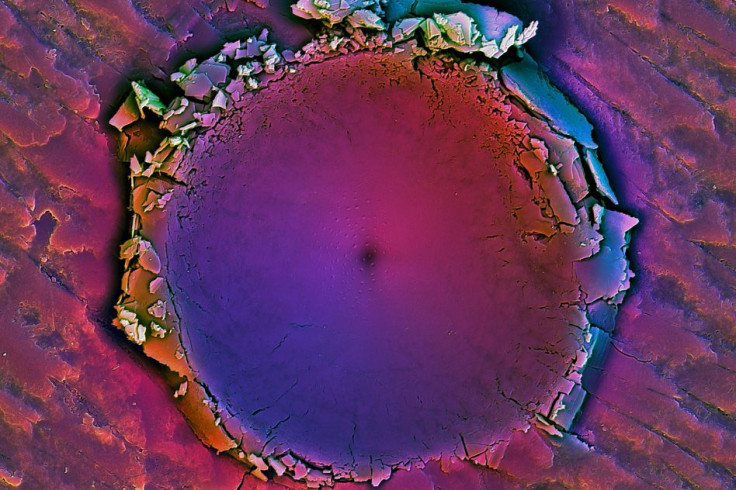Seashell Armor: Translucent Mollusk Inspires Super-Tough ‘Natural Exoskeleton’ For US Soldiers

We often think of seashells as being defined by their delicate beauty. But what if they also hold the secret to producing near-impenetrable human body armor? Researchers from the Massachusetts Institute of Technology say the structure of a certain oyster shell could inspire extremely tough and lightweight exoskeletons for use by U.S. soldiers.
According to a statement from MIT, researchers were drawn to the windowpane oyster, or Placuna placenta, because of the transparency of the mollusk’s shell. The shell, which is sometimes used in lieu of glass to make windowpanes in parts of Asia, allows 80 percent of visible light to shine through it.
Researchers found that in addition to its transparency, the oyster’s shell is incredibly resistant to penetration. The shell is made almost entirely of calcite and can disperse the impact of a blow 10 times more efficiently than the pure mineral.
The study, published in the journal Nature Materials, suggests that the material is strong enough to make bullet-proof windshields or even blast shields for combat vehicles.
"We have long studied natural exoskeletons as inspiration for the development of advanced engineered protective systems," Christine Ortiz, a materials scientist at the Massachusetts Institute of Technology and lead author of the study, told Live Science. "About five years ago we started searching for natural armor systems, which were also optically clear.”
Enter the windowpane oyster.
Ortiz’s research is part of a developing field of research that looks at structures found in nature as blueprints for modern engineering. The field is called biomimetics. It was described in the 1997 book “Biomimicry: Innovation Inspired by Nature” written by scientist and author Janine Benyus as a “new science that studies nature's models and then imitates or takes inspiration from these designs and processes to solve human problems.”
Early examples of biomimicry include Leonardo da Vinci studying the anatomy and flight of birds before attempting his “flying machine.” The Wright brothers also took inspiration from birds in flight before successfully reaching new heights in 1903.
Ortiz says that mollusks could influence the design of military armor in a similar way. To test the seashell’s resilience to penetration, researchers subjected several mollusks to indentation tests.
They found that the material isolates damage through a process called “twinning” in which individual calcite crystals break up into mirror-image pairs. As more crystals “twin” they create a boundary around the edge of the stress region that keeps the damage from expanding outward.
“To ensure survival, the exoskeletons of biological species are required to minimize the spatial extent of damage following attack or multi-hit events,” the authors noted. “Now, nanoindentation experiments on a transparent bivalve shell … show an increased energy dissipation density compared with single-crystal calcite resulting in penetration resistance and deformation localization.”
“There is so much going on right now, the advances in the next decade are going to be incredible,” Ortiz told Discovery.
© Copyright IBTimes 2025. All rights reserved.






















